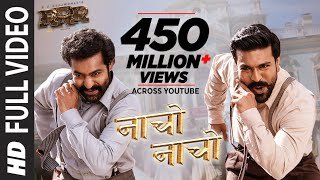🌊🔥 What Is RRR Truly About?
On its surface, RRR is an action-packed, fictionalized historical epic about two Indian revolutionaries—Alluri Sitarama Raju and Komaram Bheem—whose destinies collide in pre-independence British India.
But beneath its thunderous set pieces and operatic visuals lies a film about:
- Brotherhood forged in betrayal
- Mythology reborn through resistance
- Colonial oppression vs elemental justice
- The masculine ideal reimagined as sacrifice, not dominance
This is not history—it is historical emotion. Not reality—it is truth amplified.
🧭 Narrative Overview: Two Heroes, One Nation
RRR’s plot is engineered like a Vedic epic or superhero origin tale, structured around the cosmic meeting of opposites:
- Ram (Rama Raju) – A British colonial officer with unflinching loyalty, but secret intentions. He is fire—focused, disciplined, burning inside with a mission.
- Bheem – A tribal protector from Gond, on a quest to rescue a kidnapped girl. He is water—gentle, flowing, but capable of overwhelming force when provoked.
These two men meet as strangers, form an unbreakable bond, and then discover that they stand on opposite sides of an oppressive system—until truth and sacrifice realign their paths toward shared rebellion.
🔥 Ram: Fire in a Cage
Ram is introduced as a loyal servant of the British Empire—feared, ruthless, and seemingly devoid of mercy. But this is a mask.
Beneath the uniform is a revolutionary in disguise, sacrificing his morals to infiltrate power. His every action is not for ego but for a promise to his father—to arm the masses, to ignite rebellion from within the system.
“He burns so others may light their torches.”
Ram’s tragedy is not betrayal—but loneliness. He’s condemned to live as what he hates in order to destroy it from within.
🌊 Bheem: The River That Drowns Kings
Bheem is the polar opposite—an innocent, raw force of nature, guided by emotion, love for his people, and instinctive justice. He comes to Delhi not to fight the Empire, but to rescue a single girl. Yet his journey becomes that of a revolutionary.
Bheem represents the untainted soul of resistance. He doesn’t hide who he is. He doesn’t compromise. His confrontation with Ram is heartbreaking, because it pits truth against strategy.
He is a symbol of purity, connection to nature, and primal justice—a revolutionary forged not by theory, but by necessity.
🤝 Brotherhood as Central Myth
The heart of RRR is not nationalism. It is brotherhood.
Ram and Bheem’s relationship is a mythic bond, mirroring legendary duos like:
- Arjuna and Krishna
- Rama and Hanuman
- Fire and Water—opposites that create balance
Their friendship is not just emotional; it is spiritual. They complete each other:
- Ram gives Bheem a cause bigger than vengeance.
- Bheem gives Ram the freedom to feel, to forgive himself, to burn not with rage, but with purpose.
Their separation is biblical. Their reunion? A revolution made personal.
🎭 Colonialism as Theatrical Evil
The British are depicted not just as villains—but as exaggerated forces of demonic oppression:
- Governor Scott and his wife are cold, monstrous, imperial ghouls.
- The violence is brutal, cruel, and theatrical.
Why the exaggeration?
Because RRR is not realism—it is emotional myth-making. Colonial cruelty is a force of nature, not just policy. It’s a storm of dehumanization, and therefore, it requires gods of fire and water to challenge it.
🎬 Stylistic Brilliance: Cinema Without Restraint
S. S. Rajamouli, the director, makes cinema with no brakes—and it works.
- The camera moves like it’s dancing: fluid, expressive, lyrical.
- Action is balletic: each fight is a choreographed poem of violence and emotion.
- Music is character: songs are not interruptions—they’re narrative bursts of soul.
- “Naatu Naatu” isn’t just fun—it’s rebellion through rhythm.
- Bheem’s torture song is a battle hymn disguised as sorrow.
The film embraces excess. But every drop of spectacle carries emotional truth. Nothing is wasted.
🌌 Myth, Symbolism & Elemental Power
RRR is infused with Hindu epic imagery:
- Ram becomes Lord Rama in the climax, bow in hand, delivering divine judgment.
- Bheem channels Hanuman, with his strength, loyalty, and animalistic power.
Fire and water don’t cancel each other—they purify.
Bheem brings water to douse flames of tyranny.
Ram brings fire to burn away the old empire.
This isn’t just symbolic—it’s spiritual. The film deifies rebellion, turning ordinary men into avatars of justice.
🎯 Themes in Depth
A. Revolution as Personal Vow
Ram doesn’t fight for ideology—he fights for a promise. His revolution is born of grief and guilt. He’s not a poster child for freedom. He is a wounded son who wants to light a thousand torches, one gun at a time.
B. Heroism as Sacrifice
True strength in RRR is not in who hits harder—it’s in who sacrifices more. Ram sacrifices reputation. Bheem risks death for a child. Heroism here is defined by emotional cost.
C. Oppression as Theft of Dignity
The British don’t just steal resources—they steal language, identity, childhood, humanity. Malli (the kidnapped girl) represents more than a victim—she is the soul of a people, trafficked for amusement. Saving her becomes a holy act.
🎆 The Climax: Vengeance Becomes Rebirth
When Ram transforms into Rama—complete with saffron attire, bow and arrow, and divine fury—it’s not fan service. It is cinematic katharsis.
This is not violence for revenge. It is sacrifice for rebirth.
- Ram achieves his father’s dream: arming the people.
- Bheem returns with Malli—not just as a rescuer, but as a leader reborn.
- The blood-soaked finale isn’t tragedy. It is reclamation—of identity, of dignity, of voice.
🕊️ The Final Message
RRR asks us to believe in impossible courage, in friendship that can survive betrayal, and in a world where righteous rage can create harmony.
It’s a story that says:
“Even if the system breaks you, the soul of a nation cannot be colonized. Fire and water will rise. Together.”
🔚 Conclusion: An Epic That Transcends Its Medium
RRR is not a film—it’s a cinematic odyssey.
A symphony of style, substance, and soul.
It dares to be maximalist, mythic, masculine—but also emotional, tender, and revolutionary.
In a world starved for genuine emotion and moral clarity, RRR doesn’t whisper—it roars.

